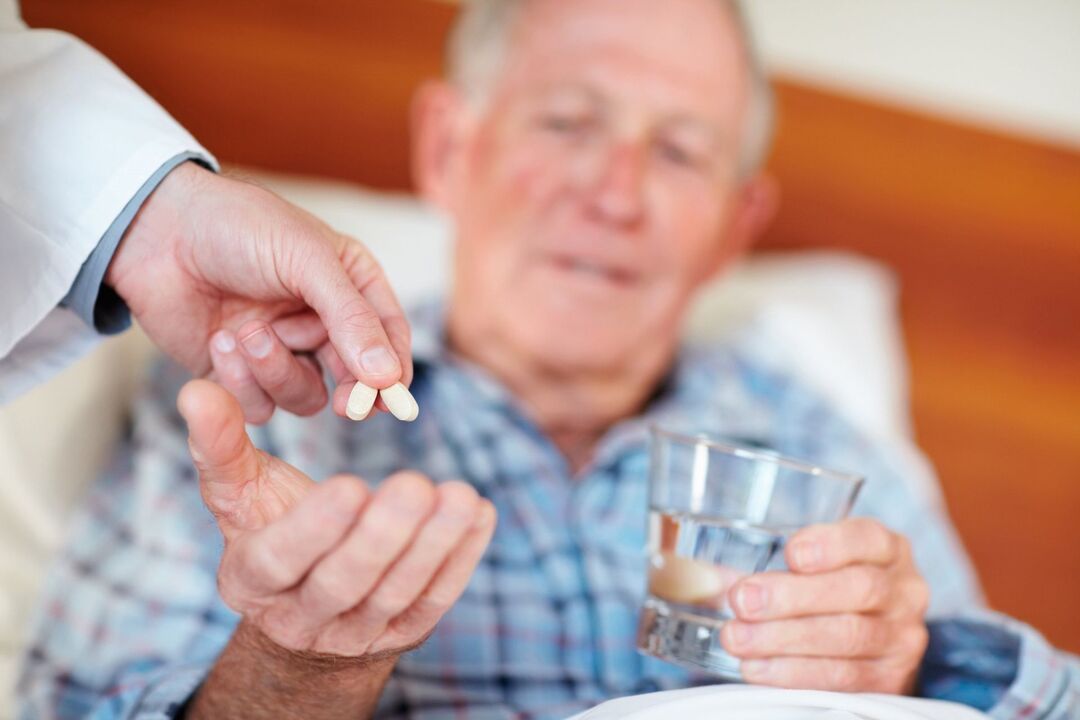
Prostate adenoma and prostatitis are two diseases that cause a real panic attack in men.These “male” pathologies are not absolute analogues, although in both cases the prostate is affected and it is necessary to take medications for the treatment of prostatitis and prostate adenoma, use additional methods of therapy and, in case of complications, prescribe surgery.However, when we talk about an adenoma we mean a benign neoplasm, while prostatitis is an inflammatory process that occurs in the prostate.
Both diseases are most often diagnosed in men aged 45 or 50, while many men mistakenly believe that adenomas are a complication of prostatitis.This misunderstanding is often due to the similarity of symptoms - both pathologies are accompanied by difficulty urinating and pain.The treatment has both some similarities and fundamental differences.
Principles of disease therapy
Let's consider the main stages of treatment of prostate adenoma and prostatitis.In both cases, treatment should be comprehensive, which makes it more effective.Acute prostatitis in men can be cured by antimicrobial therapy with broad-spectrum drugs, anti-inflammatory drugs and desensitizing drugs.If the formation of an abscess is suspected, an autopsy of the source of the purulent inflammatory process is prescribed.
Drug treatment is intended to stabilize the patient's condition by reducing the temperature, stopping inflammatory processes and returning the general condition to normal.The doctor confirms the need to remove the abscess through a rectal and instrumental examination, as well as laboratory tests.After the autopsy, a drain will be placed in the hospital to drain the pus.After the prostate is freed from pus, the inflammatory processes stop, the drainage is removed, after which the wound heals within about a week.
Chronic prostatitis in men requires a significantly longer treatment period against the background of a change in the usual lifestyle and diet.The main goal of therapy is to eliminate congestion.For this use:

- Taking antimicrobial medication, which will last two to eight weeks.
- Medicines that improve blood circulation.
- Prescribing non-steroidal anti-inflammatory drugs.
- The use of physiotherapeutic methods – magnetic field therapy and laser treatment.The use of ultrasound, reflexology and hirudotherapy is also recommended.
- Glandular massage.
Modern therapeutic techniques guarantee the establishment of a relatively stable remission, which can last for years, and, if the circumstances coincide successfully, a complete cure.
If prostate adenoma is detected in the initial stages of development, drug treatment is the most effective treatment.Similar to the treatment of prostatitis in men, physical therapy, diet therapy are prescribed, and lifestyle adjustments are recommended.The purpose of taking medication is to slow the growth and reduce the volume of the gland, as well as reduce the severity of urinary tract diseases.The following are used for this:
- Antimicrobial agents.
- Drugs that correct hormone metabolism and thus allow the gland to shrink.
- To stabilize the urge to urinate, medications that improve the tone of the prostate and urethra are recommended.
- With capsules of plant origin, the difficulty arises in working with them because their action has not been fully studied.
- Photodynamic therapy is prescribed.
- Carry out ozone therapy and exercise therapy
In both cases, after consulting your doctor, it is allowed to use traditional recipes as an additional remedy.Drugs for prostatitis and adenomas have a better effect if the victim refuses addiction.
The use of antibiotics in the development of prostatitis and glandular adenomas
Let's look at what drugs need to be taken for prostatitis and prostate adenoma, starting with antimicrobials.Antibiotics for prostate adenoma are used only if the disease is accompanied by a bacterial infection, which is considered quite common.Antimicrobial drugs for prostatitis are among the main points of therapy.In both cases the following may be prescribed:
- Penicillin group drugs.They are produced in the form of tablets, injections and oral suspensions.
- Substances of the tetracycline group.
- Cephalosporins.The main drugs for prostatitis.They are prescribed if the inflammation is caused by gram-positive or gram-negative bacteria, anaerobic pathogens.Substances should be administered parenterally.
- Fluoroquinolones.They are prescribed in the presence of ureaplasma, chlamydia, gardnerella, staphylococcal or streptococcal pathogens, E. coli or mycoplasma.
- Group of macrolides.The advantage of the drugs is their low toxicity and they can accumulate in the prostate.Medicines are prepared in tablets or solutions.
- Aminoglycosides.This is an excellent option if the causative agent of inflammation cannot be identified or there are several of them.
Treatment with antimicrobial drugs for the diseases in question can eliminate many negative symptoms, but is accompanied by side effects.In most cases, this is a disruption of the digestive system and the formation of dysbiosis.
Therapy with inhibitors and adrenergic blockers
The remedies for prostatitis and prostate adenoma include α1- adrenergic blockers and inhibitors.The former have a relaxing effect on the muscle tissue of the prostate, which allows muscle spasms to be quickly eliminated, which normalizes the urge to urinate, which is disturbed in 85%.In addition, such medications can lead to a sharp drop in blood pressure, which should be taken into account when prescribing.
Medications for prostate adenoma include 5-alpha-reductase inhibitors.These drugs are most often used because they effectively prevent the development of pathology, help reduce the size of the prostate and help normalize the urination process.Inhibitors are very effective agents, since after therapy no surgical intervention is required in over 50% of victims.Combined treatment methods achieve an even greater effect and the results achieved are much more stable than with mono treatment.
Medication for pain and inflammation in the prostate
Therapy of the pathologies under consideration involves relieving pain and eliminating inflammatory processes.The pain is unbearable, especially during the exacerbation of the disease;Antispasmodics help relieve it.They help relax the smooth muscles of the prostate and improve blood circulation.
Prostatitis is characterized by inflammatory processes in the prostate.If treatment is ignored, they progress, accompanied by pain, erectile dysfunction and urinary retention due to compressed ducts.When recommending the treatment of prostatitis, doctors often prescribe medications to relieve inflammation, which in many cases allows eliminating negative symptoms.
An inexpensive and effective drug for prostatitis can also be used, which is an anti-inflammatory non-steroidal drug with an antipyretic effect.All medicines should be taken strictly according to the doctor's prescription and under his direct supervision.
Herbal preparations used for treatment
Medicines for adenomas that have a noticeable positive effect are herbal remedies, among which the extract obtained from the Permixon palm stands out.
Can be used:
- A drug that has a positive effect on the metabolism of the system and at the same time is a general strengthening substance.It contains sandalwood, sage, ginseng, ginger, cloves, calamus and other ingredients.
- A medicine that is a dietary supplement and contains over 40 ingredients, most of which are of plant origin.
- A drug used as an antiseptic, analgesic and immunomodulator with antipyretic and anti-inflammatory properties.The product contains burdock root, elm and ash bark, juniper berries and bearberry leaves.
This is not a complete review of drugs that can be used to treat prostatitis and prostate adenoma.However, they should be prescribed exclusively by a doctor to avoid unpleasant and dangerous consequences.













